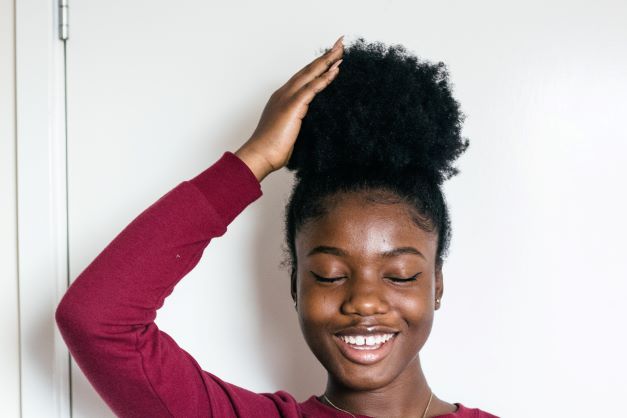INDIANAPOLIS — Black women and others with curly or kinky hair encounter a vast and confusing array of haircare options. Advice on the best products to use for a certain type of hair is often contradictory, and the results can be highly variable. Now, scientists are bringing order to this chaos by identifying properties such as the number of curls or coils in a given length of hair that could eventually help users pick the perfect product and achieve consistent results.
“As an African American, I was born with very curly, seemingly unmanageable hair, and other ethnicities can possess similar hair properties,” says Michelle Gaines, Ph.D., the project’s principal investigator. Gaines used to rely on chemical relaxers to straighten her tresses but stopped when she became pregnant. She was then confronted with an overwhelming variety of products available to style and care for natural hair. Limited guidance about the best options for her particular hair type, and conflicting advice from friends, YouTube videos and other resources, didn’t help the situation.
Clearly, Gaines says, there is a major knowledge gap that needs to be closed, so she has set out to fill it. “As a polymer chemist and materials scientist, I thought it would be great to start a project where I could study the nuances of my hair, because I felt like it wasn’t very well understood,” she says.
Most prior research on properties was done on wavy or straight strands from white or Asian people, according to Gaines, who is at Spelman College, a historically Black college for women. Less is known about what has traditionally been called “African” hair, she says.
L’Oréal, as well as celebrity hair stylist Andre Walker and others, have developed systems to classify different types of hair. Although some people believe all of these classification methods convey a preference for a smoother and straighter appearance — a bias with historic links to the preferential treatment of enslaved people who had straighter hair and lighter skin — they’re intended to help users choose the most suitable haircare products. Gaines felt these systems worked well for straight and wavy hair but lacked the nuance to distinguish the many varieties of curly and kinky hair.
Gaines wanted to see if she could identify differences in properties other than curl shape and tightness, and then use those differences to develop a more precise classification system. Undergraduates at Spelman eagerly lined up to help. Gaines and her student, Imani Page, are collaborating with Alfred Crosby, Ph.D., and Gregory Grason, Ph.D., at the University of Massachusetts Amherst. The team measured the mechanical properties of wavy, curly and kinky hairs with a texture analyzer and a dynamic mechanical analyzer. These instruments measure force, stress and other parameters as a strand is first uncurled and then stretched until it breaks.
Among other findings, the team recently reported results for the “stretch ratio,” a new parameter they developed to quantify and compare the force required to uncurl a strand until it’s straight. They also found that wavy hair has less than one full contour in that length, curly has about two, and kinky/coily has approximately three or more. The results suggest that people will be able to classify their own hair by counting contours, Gaines says.
Additionally, Gaines has begun examining the layer that protects the surface of each hair fiber. Known as the cuticle, it consists of flat cells that overlap each other, like roof shingles. Gaines’ preliminary findings show the cuticle layers are larger and spaced further apart in wavy hair than in curly and coily hair. Also, the cuticle edges are smoother in wavy hair. These findings could help the researchers explain why curly and coily locks dry out faster than wavy and straight tresses. Ultimately, Gaines hopes, the team’s findings will identify the best parameters for developers to design and for consumers to select the most suitable products for each of the wondrously varied categories of hair.
The researchers acknowledge support from the University of Massachusetts Amherst.
Source: American Chemical Society/Newswise
Image: Suad Kamardeen/Unsplash



































